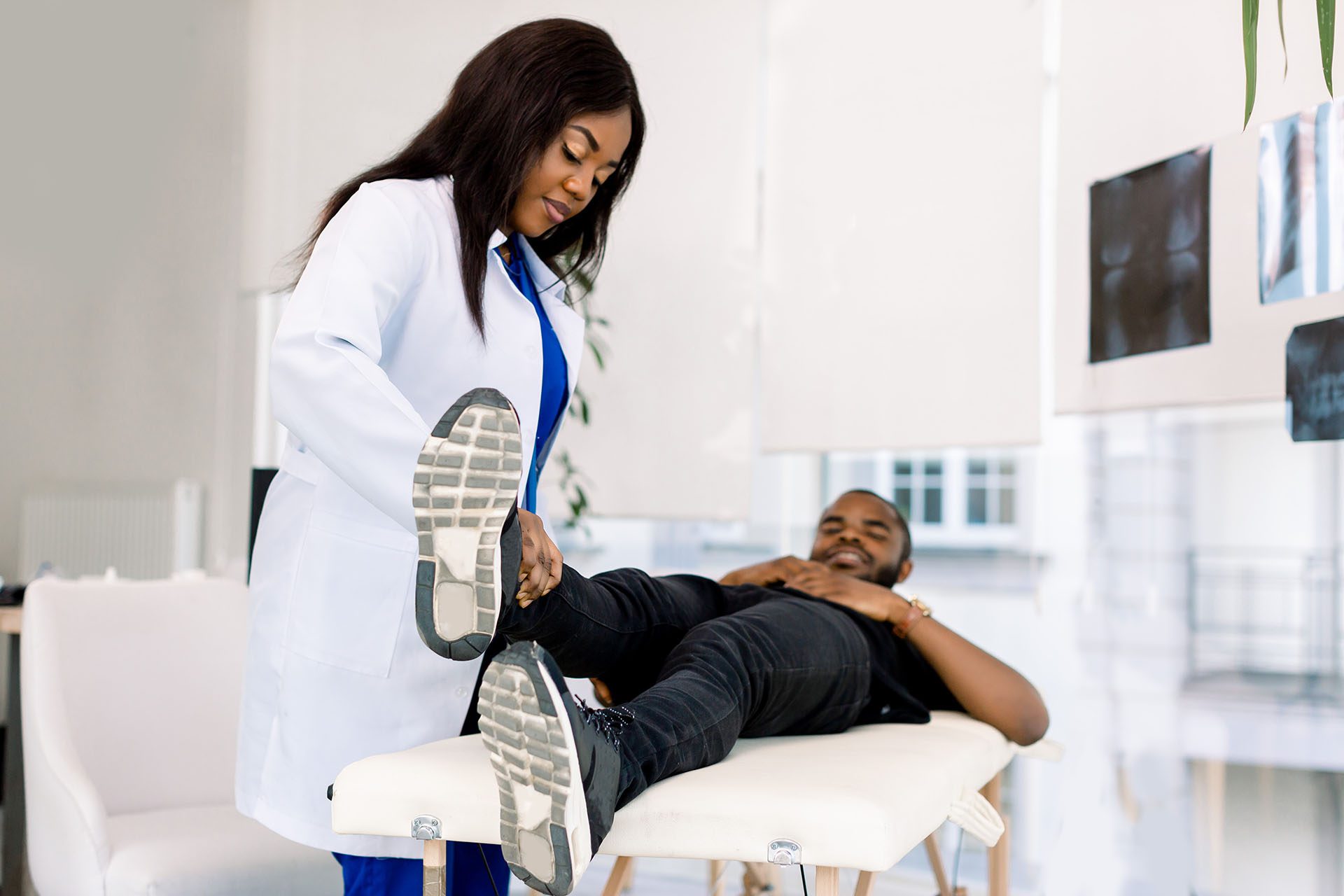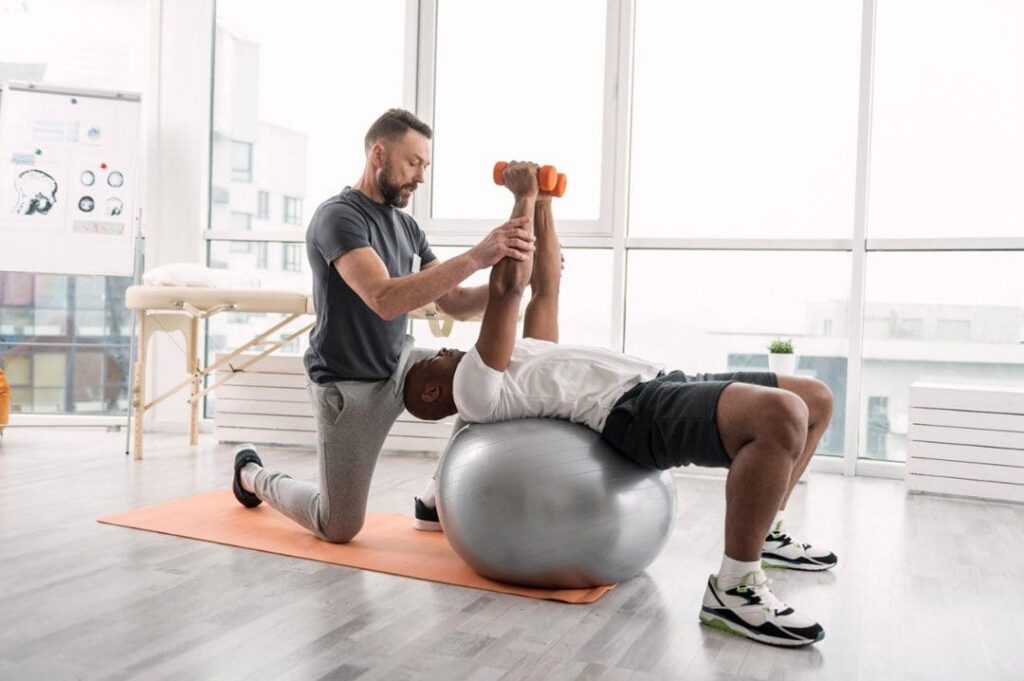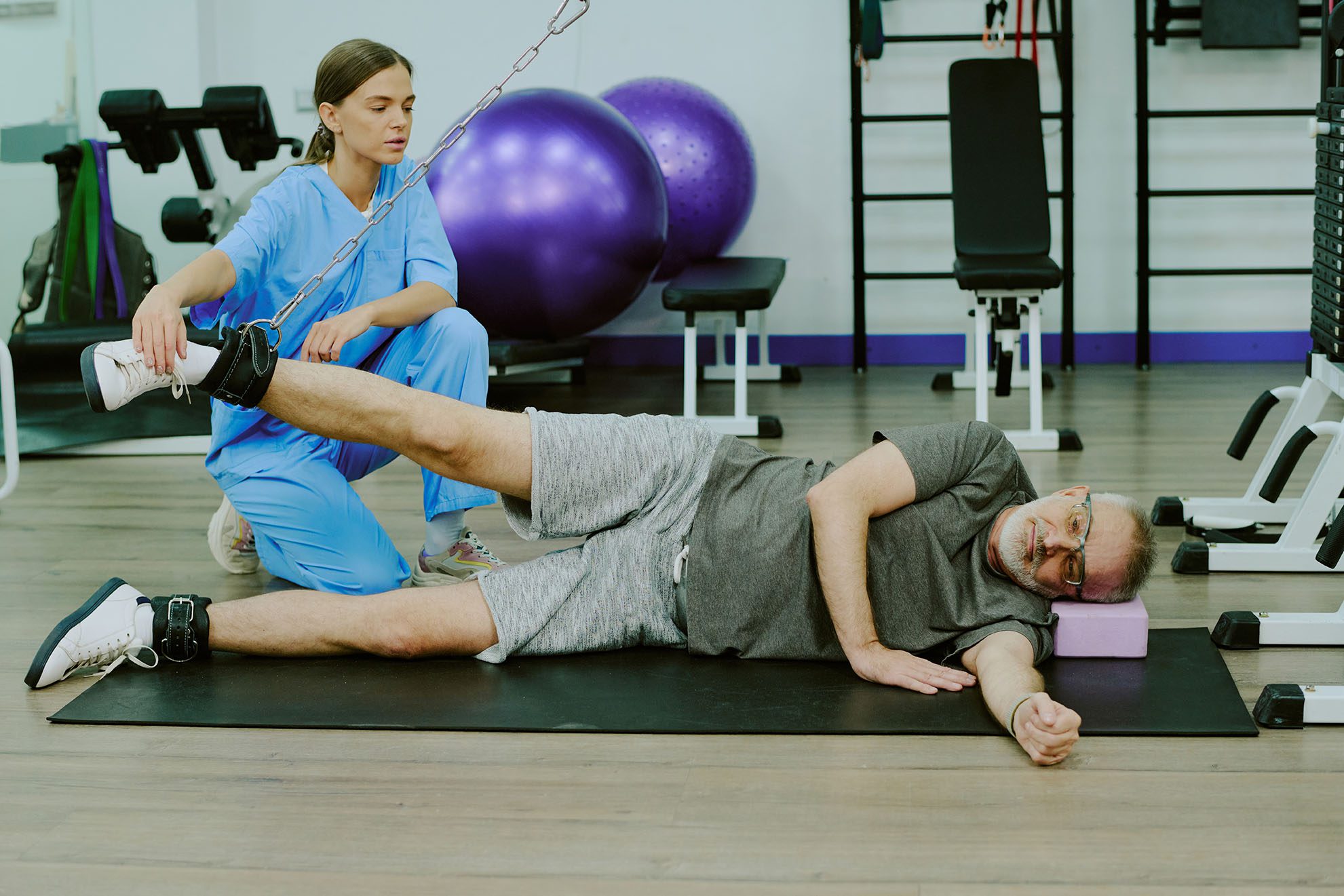Sudden Movement Injuries: Chiropractic Treatment

Recovering from Sudden Injuries: Chiropractic and Integrative Care for Better Mobility
Think about this: As you pivot to pass the ball during a pickup basketball game, you suddenly feel a twinge in your knee. Perhaps you’re involved in a collision, and your head suddenly snaps back, causing your neck to throb. These are sudden movement injuries—quick, unexpected forces that strain muscles, sprain joints, or, in some cases, result from uncontrollable jerks due to underlying health issues (Hopkins Medicine, n.d.; Verywell Health, 2022). Sudden movement injuries can refer to either acute soft-tissue injuries caused by a sudden external force or involuntary movements resulting from an underlying medical or neurological condition. Sudden movement injuries are acute musculoskeletal injuries, such as strains or sprains, caused by a single, forceful action or traumatic event. Chiropractic integrative care can help treat these injuries by reducing pain and inflammation, restoring joint function and mobility, and promoting the body’s natural healing processes (Cleveland Clinic, 2023a; UF Health, n.d.).
Chiropractic integrative care provides a natural path to recovery, combining spinal adjustments with nutrition and therapies like massage. At Chiromed – Integrated Medicine Holistic Healthcare in El Paso, TX, Dr. Alexander Jimenez, DC, APRN, FNP-BC, uses these methods to help patients heal and regain strength (Jimenez, n.d.a). This article covers what sudden movement injuries are, their causes, and how Dr. Jimenez’s holistic approach aids recovery. You’ll find simple tips to heal faster and avoid repeats, all based on solid science.
From sports mishaps to unexpected jolts, these injuries can throw off your routine. With the right care, you can get back to moving freely and feeling great (Cleveland Clinic, 2023b).
Defining Sudden Movement Injuries
Sudden movement injuries come in two main types. Acute soft-tissue injuries, like strains (stretched muscles or tendons) or sprains (stretched ligaments), happen from a single forceful motion, such as twisting an ankle or jerking your back in a fall (Hopkins Medicine, n.d.; Cleveland Clinic, 2023c). These often occur in sports, accidents, or everyday slips, causing immediate pain, swelling, or limited motion (UPMC, n.d.).
The other type involves involuntary movements, like twitches or shakes, linked to neurological conditions such as myoclonus or ataxia (Verywell Health, 2022; Children’s Hospital, n.d.). These can stem from brain injuries, seizures, or migraines, leading to uncontrolled jerks that may strain muscles or cause falls (Edward K. Le, 2023; Movement Disorders, n.d.).
Both types affect how you move and can lead to long-term pain if ignored. Acute injuries bring quick bruising or weakness, while neurological ones may cause unsteadiness or anxiety (Cleveland Clinic, 2023a; UF Health, n.d.). Getting help early prevents chronic problems like joint damage or muscle weakness (Cleveland Clinic, 2023b).
Common Causes of These Injuries
Acute soft-tissue injuries often come from sudden force. A quick turn in soccer can sprain a ligament, or lifting a heavy box wrong can strain a shoulder (Cleveland Clinic, 2023c). Typical causes include:
- Sports Accidents: Sudden pivots or tackles in football or basketball (Cleveland Clinic, 2023b).
- Car Crashes: Whiplash from neck snapping (Cleveland Clinic, 2023d).
- Slips or Falls: Tripping on stairs, straining a wrist (Pain Care Florida, n.d.).
- No Warm-Up: Jumping into activity without stretching (Cleveland Clinic, 2023c).
Involuntary movement injuries stem from medical issues. Myoclonus, causing jerky motions, can come from epilepsy or head trauma, straining muscles during spasms (Movement Disorders, n.d.). Ataxia, leading to shaky steps, might follow a stroke, causing trips or sprains (Children’s Hospital, n.d.). Risks rise with age, weak muscles, or past injuries that make joints less stable (UPMC, n.d.).
Both types disrupt normal motion. A strained calf hurts when running, and involuntary shakes can lead to falls, resulting in new injuries (Edward K. Le, 2023).
Symptoms and Effects
Symptoms depend on the injury. For soft-tissue types, you might see:
- Sharp pain or swelling, like a throbbing ankle after a twist (Hopkins Medicine, n.d.).
- Bruising or tightness may cause difficulty in bending or stretching (Cleveland Clinic, 2023c).
- Weakness can manifest as difficulty walking following a knee sprain (UPMC, n.d.).
Involuntary movement injuries look different:
- Sudden twitches or tremors, like myoclonus spasms (Movement Disorders, n.d.).
- Unsteady walking or balance loss from ataxia (Children’s Hospital, n.d.).
- Constant jerks can cause soreness (Verywell Health, 2022).
These can make daily tasks tough—a sprained wrist hurts when lifting, or involuntary jerks cause social stress (Cleveland Clinic, 2023a). Untreated, they risk chronic pain, joint damage, or falls, especially in older adults (Cleveland Clinic, 2023b). Noticing early signs like swelling or unsteadiness can help address it quickly.
Chiropractic Care for Recovery
Chiropractic care helps sudden movement injuries by fixing spinal misalignments that pinch nerves, easing pain and swelling (New Edge Family Chiropractic, n.d.). Adjustments gently realign the spine, improving joint function and muscle coordination (Rangeline Chiropractic, n.d.). For a sprained knee, adjustments reduce nerve pressure, speeding healing (Texas Medical Institute, n.d.).
For involuntary movements, chiropractic calms nervous system stress, reducing spasms in conditions like myoclonus (Jimenez, n.d.a). Patients often feel relief and better motion after a few visits (Cleveland Clinic, 2023b). It’s like unlocking a stuck gear, letting your body work right again.
Dr. Jimenez’s Expertise at El Paso’s Clinic
At El Paso’s Chiropractic Rehabilitation Clinic, Dr. Alexander Jimenez, DC, APRN, FNP-BC, treats sudden movement injuries from work, sports, personal falls, or motor vehicle accidents (MVAs) using his dual expertise as a chiropractor and nurse practitioner. “Trauma misaligns the spine, slowing healing and movement,” he explains (Jimenez, n.d.b).
His clinic uses advanced diagnostics: X-rays for neuromusculoskeletal imaging and blood tests to check inflammation. A sports injury, like a jerked shoulder, might show nerve pinches limiting arm motion (Jimenez, n.d.a). Treatments are non-surgical: adjustments restore alignment, ultrasound reduces swelling, and exercises strengthen muscles. For MVAs, Dr. Jimenez provides detailed medical-legal documentation, working with specialists to ensure smooth claims processing.
Integrative therapies boost recovery. Massage improves blood flow, speeding tissue repair; acupuncture reduces pain for easier motion; and nutrition plans with anti-inflammatory foods support healing (Jimenez, n.d.b). A worker with a strained neck from a fall moved freely after adjustments and massage. Dr. Jimenez targets root causes, like weak muscles, to prevent chronic issues.
Integrative Therapies for Recovery
The clinic’s integrative approach enhances healing. Massage therapy relaxes tight muscles, boosting circulation to alleviate sprains faster (Texas Medical Institute, n.d.). Acupuncture targets points to ease pain and calm spasms, helping with involuntary movements (Jimenez, n.d.b). Exercises like leg lifts rebuild strength and stabilize joints (Sport and Spinal Physio, n.d.).
The RICE method (rest, ice, compression, elevation) helps reduce swelling in soft-tissue injuries early on (Cleveland Clinic, 2023e). These therapies, paired with chiropractic, accelerate recovery and prevent issues like arthritis (Cleveland Clinic, 2023b).
Nutrition to Aid Healing
Nutrition supports recovery from sudden movement injuries. Omega-3-rich foods like salmon reduce inflammation, easing joint pain (Best Grand Rapids Chiropractor, n.d.). Leafy greens like spinach provide antioxidants to protect tissues (Spine, n.d., p. 417). Lean proteins like chicken rebuild muscles and ligaments (Human Care NY, n.d.).
Calcium from yogurt strengthens bones, while magnesium in nuts prevents spasms (Foot and Ankle Experts, n.d.). Try salmon salads or berry smoothies to aid healing. These foods work with chiropractic to speed recovery (Rangeline Chiropractic, n.d.).
Preventing Future Injuries
Prevent injuries with smart habits. Warm up before activity with stretches to lower strain risks (Cleveland Clinic, 2023c). Strengthen core muscles with planks to stabilize joints (Sport and Spinal Physio, n.d.). Use proper form when lifting—bend knees, keep back straight (UPMC, n.d.).
For neurological issues, manage conditions like seizures with doctor advice to reduce spasms (Verywell Health, 2022). Regular chiropractic checkups catch misalignments early (New Edge Family Chiropractic, n.d.). These steps keep you safe and moving.
Patient Success Stories
At the clinic, a basketball player with a sprained ankle healed with adjustments and protein-rich meals, returning to the court. A driver post-MVA eased neck pain with acupuncture and greens. These stories show how integrative care restores mobility.
Conclusion
Sudden movement injuries, from sprains to involuntary jerks, can disrupt life, but chiropractic care at El Paso’s Chiropractic Rehabilitation Clinic, led by Dr. Jimenez, heals them naturally. Using adjustments, nutrition, and therapies like massage, the clinic restores movement. Try warm-ups, eat omega-3s, and visit the clinic. Stay active and pain-free.
References
Best Grand Rapids Chiropractor. (n.d.). Empowering nutritional advice to support chiropractic treatment for optimal health. https://www.bestgrandrapidschiropractor.com/empowering-nutritional-advice-to-support-chiropractic-treatment-for-optimal-health/
Children’s Hospital. (n.d.). Movement disorders. https://www.childrenshospital.org/conditions/movement-disorders
Cleveland Clinic. (2023a). Involuntary movement. https://www.verywellhealth.com/involuntary-movement-5187794
Cleveland Clinic. (2023b). Soft-tissue injury. https://my.clevelandclinic.org/health/diseases/soft-tissue-injury
Cleveland Clinic. (2023c). Muscle strains. https://my.clevelandclinic.org/health/diseases/22336-muscle-strains
Cleveland Clinic. (2023d). Whiplash. https://my.clevelandclinic.org/health/diseases/11982-whiplash
Cleveland Clinic. (2023e). RICE method. https://my.clevelandclinic.org/health/treatments/rice-method
Edward K. Le. (2023). Causes, types, and treatment of TBI involuntary movements. https://www.edwardkle.com/blog/2023/07/causes-types-and-treatment-of-tbi-involuntary-movements/
Foot and Ankle Experts. (n.d.). Good food for happy feet. https://footandankleexperts.com.au/foot-health-advice/good-food-for-happy-feet
417 Spine. (n.d.). Power superfoods enhance chiropractic treatments Springfield Missouri. https://417spine.com/power-superfoods-enhance-chiropractic-treatments-springfield-missouri/
Hopkins Medicine. (n.d.). Soft-tissue injuries. https://www.hopkinsmedicine.org/health/conditions-and-diseases/softtissue-injuries
Human Care NY. (n.d.). Foods that aid senior mobility. https://www.humancareny.com/blog/foods-that-aid-senior-mobility
Jimenez, A. (n.d.a). Injury specialists. https://dralexjimenez.com/
Jimenez, A. (n.d.b). Dr. Alexander Jimenez, DC, APRN, FNP-BC. https://www.linkedin.com/in/dralexjimenez/
Movement Disorders. (n.d.). Myoclonus: Jerky involuntary movements. https://www.movementdisorders.org/MDS/Resources/Patient-Education/Myoclonus-Jerky-Involuntary-Movements.htm
New Edge Family Chiropractic. (n.d.). Chiropractic adjustments for optimal nerve supply. https://newedgefamilychiropractic.com/chiropractic-adjustments-for-optimal-nerve-supply/
Pain Care Florida. (n.d.). Unintentional accidental injuries. https://paincareflorida.com/medical-pain-conditions/unintentional-accidental-injuries/
Rangeline Chiropractic. (n.d.). Integrating chiropractic care with nutrition for optimal wellness. https://www.rangelinechiropractic.com/blog/integrating-chiropractic-care-with-nutrition-for-optimal-wellness
Sport and Spinal Physio. (n.d.). 3 surprisingly easy steps to improve your flexibility. https://sportandspinalphysio.com.au/3-surprisingly-easy-steps-to-improve-your-flexibility/
Texas Medical Institute. (n.d.). Chiropractic and posture: Improving alignment for a pain-free life. https://www.texasmedicalinstitute.com/chiropractic-and-posture-improving-alignment-for-a-pain-free-life/
UF Health. (n.d.). Movement uncontrollable. https://ufhealth.org/conditions-and-treatments/movement-uncontrollable
UPMC. (n.d.). Sprains and strains. https://www.upmc.com/services/orthopaedics/conditions/sprains-strains
Verywell Health. (2022). Involuntary movement. https://www.verywellhealth.com/involuntary-movement-5187794





